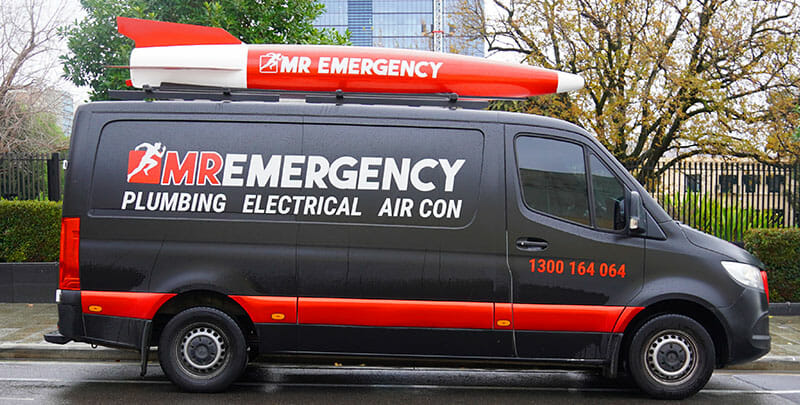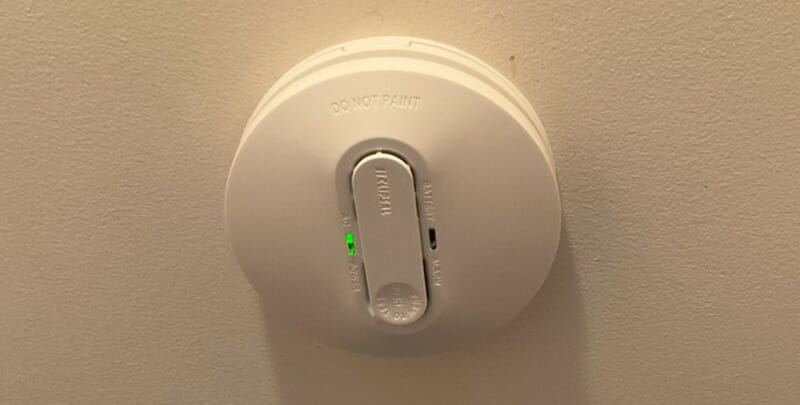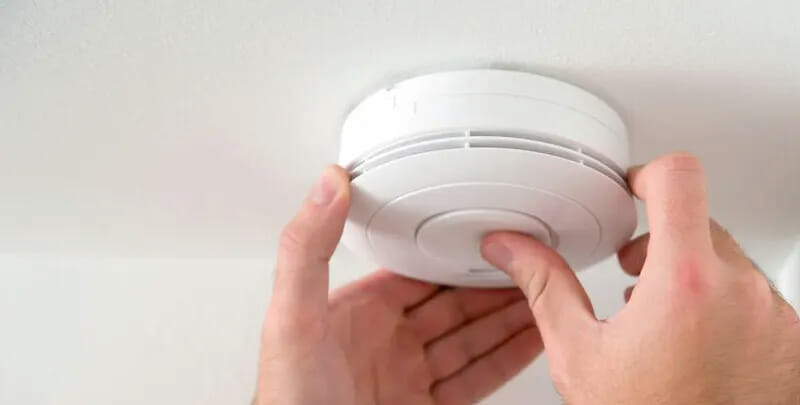
Are Your Smoke Alarms Placed Correctly?
Can you imagine a fire breaking out in your home while you sleep, without warning until it’s too late? It’s a terrifying thought.
That’s why smoke alarms are an absolute necessity in every household. But here’s the question: Are your smoke alarms placed correctly to provide the best possible coverage?
Uncover the secrets of smoke alarm placement and how to ensure your home is equipped with the ultimate defence against fire.
Get ready to discover the key to protecting you and your property and creating a safer haven for your family.
What is a Smoke Alarm and Its Various Types?
A smoke alarm is a device designed to detect the presence of smoke in the air and alert occupants of a potential fire.
It plays a crucial role in providing early warning, allowing people to evacuate quickly and minimise the risk of injuries and property damage.
There are two types of smoke alarms – ionisation and photoelectric.
Ionisation Smoke Alarms
Ionisation smoke alarms are designed to detect fast, flaming fires. They contain a small amount of radioactive material that ionises the air inside the smoke alarm chamber.
When smoke enters the chamber, it disrupts the ion flow, triggering the alarm. An ionisation smoke alarm is more sensitive to the smaller smoke particles produced by fast-burning fires, such as those caused by paper or flammable liquids.
Photoelectric Smoke Alarms
Photoelectric smoke alarms are more effective at detecting slow, smouldering fires. They work by using a light source and a light sensor. When smoke enters the chamber, it scatters the light, activating the sensor and triggering the alarm.
Photoelectric alarms are particularly sensitive to the larger smoke particles produced by smouldering fires, such as those caused by overheated wiring in electrical appliances or a cigarette left unattended.
It is important to note that both types of smoke alarms have strengths and weaknesses. For optimal fire protection here, experts recommend using a combination of ionisation and photoelectric smoke alarms or dual-sensor alarms that incorporate both technologies. This ensures comprehensive coverage and increases the chances of early detection in various fire scenarios.
Ultimately, the type of smoke alarm you choose for your home depends on factors such as the specific fire risks in your area and the layout of your house. Consulting with local fire authorities or a qualified electrician can help determine your home’s most suitable smoke alarm types.

Battery-Powered and Wireless Interconnected Options
To maximise the effectiveness of your smoke alarms, it is important to consider the available power source and connectivity options.
Battery-powered smoke alarms and wireless interconnected smoke alarms offer distinct advantages that enhance their performance in safeguarding your home against the fire threat.
Battery-Powered Smoke Alarms
Battery-powered smoke alarms are popular for their ease of installation and flexibility. They operate on batteries, eliminating the need for a direct electrical connection. This makes them suitable for properties without existing wiring or areas where installing the main’s power may be challenging.
Battery-powered smoke alarms are typically equipped with long-lasting batteries that can provide reliable operation for several years.
However, it is essential to regularly test and replace smoke alarm batteries according to the manufacturer’s instructions to ensure continuous functionality.
By keeping all the alarms’ batteries fresh, you can trust that your smoke alarms are always ready to detect smoke particles and emit life-saving alerts.
Wireless Interconnected Smoke Alarms
Wireless interconnected smoke alarms take smoke alarm systems to the next level by allowing seamless communication between multiple devices.
When one smoke alarm detects smoke in an interconnected wireless setup, it triggers all other smoke alarms in the network to sound simultaneously. This ensures that everyone in the house is alerted regardless of their location.
The wireless technology eliminates the need for complex wiring, making installation easier and more flexible. With wireless interconnected smoke detectors and alarms, you can create a comprehensive safety network throughout your home, providing enhanced coverage and response during a fire.
Smoke Alarm Placement Guidelines
Now that we understand the different types of compliant smoke alarms, let’s explore the key guidelines for proper smoke alarm placement:
- Smoke alarms on every level: You should be installing smoke alarms on each level of your home, including basements and attics. This ensures early detection regardless of where a fire might originate.
- Install smoke alarms in every bedroom: Smoke alarms must be installed in bedrooms. This is essential since fires can spread rapidly during the night when people are asleep. Place smoke alarms inside each bedroom and outside sleeping areas to provide early warning.
- Install smoke alarms in hallways and common areas: You should be installing smoke alarms in hallways leading to bedrooms and in other common areas such as living rooms, dining rooms, and family rooms. These locations will help ensure early detection and escape routes in case of a fire.
- Install interconnected smoke alarms: Interconnected smoke alarms are linked so that when one alarm detects smoke, all alarms sound simultaneous. This ensures that everyone in the house is alerted, no matter where they are. Interconnected alarms can be wired or wirelessly interconnected.
- Use photoelectric smoke alarms near kitchens and bathrooms: Photoelectric alarms are less prone to false alarms caused by cooking or steam from bathrooms. Install them near these areas to minimise nuisance alarms while providing effective protection.
- Follow the manufacturer’s instructions: Always refer to the manufacturer’s instructions for specific guidance on installing and maintaining your smoke alarms. Different models may have slight variations in recommended placement and maintenance requirements.
- Regularly test and replace batteries: Test your smoke alarms monthly by pressing the test button and replace batteries at least once a year or as the manufacturer recommends. A working smoke alarm is crucial for early detection.
- Beware of dead air space: Dead air space is an unventilated space where air doesn’t circulate (such as the apex of a cathedral ceiling). Be careful never to place alarms in dead air spaces.
Compliance with Regulations and Standards
In Australia, smoke alarms must comply with specific regulations and standards to ensure the safety of residential properties.
These smoke alarm laws and regulations aim to provide guidelines for installing, maintaining, and positioning smoke alarms.
Understanding these requirements is essential for homeowners, landlords, and property managers to meet legal obligations and create a safer living environment.
Australian Standard AS 3786-2014
The Australian Standard AS 3786-2014 outlines the requirements for smoke alarms in residential dwellings. It provides guidelines for selecting, installing, and maintaining smoke alarms. This standard specifies the types of alarms, such as ionisation and photoelectric, and their appropriate placement within the property.

Building Code of Australia (BCA)
The Building Code of Australia (BCA) sets the requirements for building construction and safety standards. It includes provisions related to fire safety, including the installation of smoke alarms.
The BCA specifies the number of smoke alarms required and their placement in different types of buildings, ensuring compliance with national fire safety regulations.
State and Territory Legislation
Each Australian state and territory has specific legislation and regulations governing smoke alarm installation and maintenance. Smoke alarm requirements may differ slightly, so it’s important to consult the legislation applicable to your location.
For example, in Queensland, the Residential Tenancies and Rooming Accommodation Act 2008 mandates the installation of interconnected photoelectric smoke alarms in rental properties. Most states now require hard-wired smoke alarms rather than battery powered units.
Rental Property Compliance
In rental properties, landlords and property managers have legal responsibilities to ensure smoke alarms are installed and maintained correctly.
Regulations may require specific smoke alarm sounds and types, such as interconnected photoelectric smoke alarms, and impose regular testing and maintenance obligations. Compliance with these requirements is essential for rental property owners to meet their duty of care towards tenants.
To ensure compliance with regulations and standard smoke alarms, it is recommended to consult local fire authorities or a qualified electrician. They can guide the specific requirements applicable to your area and help with the proper installation and maintenance of smoke alarms.
Remember, adhering to smoke alarm regulations not only fulfils legal obligations but also plays a vital role in safeguarding lives and property from the devastating impact of fires.
Optimising Smoke Alarm Placement
Consulting with professionals like Mr Emergency can provide expert guidance on smoke alarm placement, installation, and maintenance. Our experienced team can help you navigate the regulations and ensure your smoke alarms comply with the highest safety standards.
Don’t compromise regarding fire safety. Invest in proper smoke alarm placement and stay prepared for emergencies. Your vigilance and attention to detail today can save lives and protect your cherished home tomorrow.
Trust our experts to be your partners in ensuring optimal coverage and functionality of your smoke alarms. Contact Mr Emergency today.
Please note: This information is provided for advice purposes only. Regulations differ from state to state, so please consult your local authorities or an industry professional before proceeding with any work. See our Terms & Conditions here.


